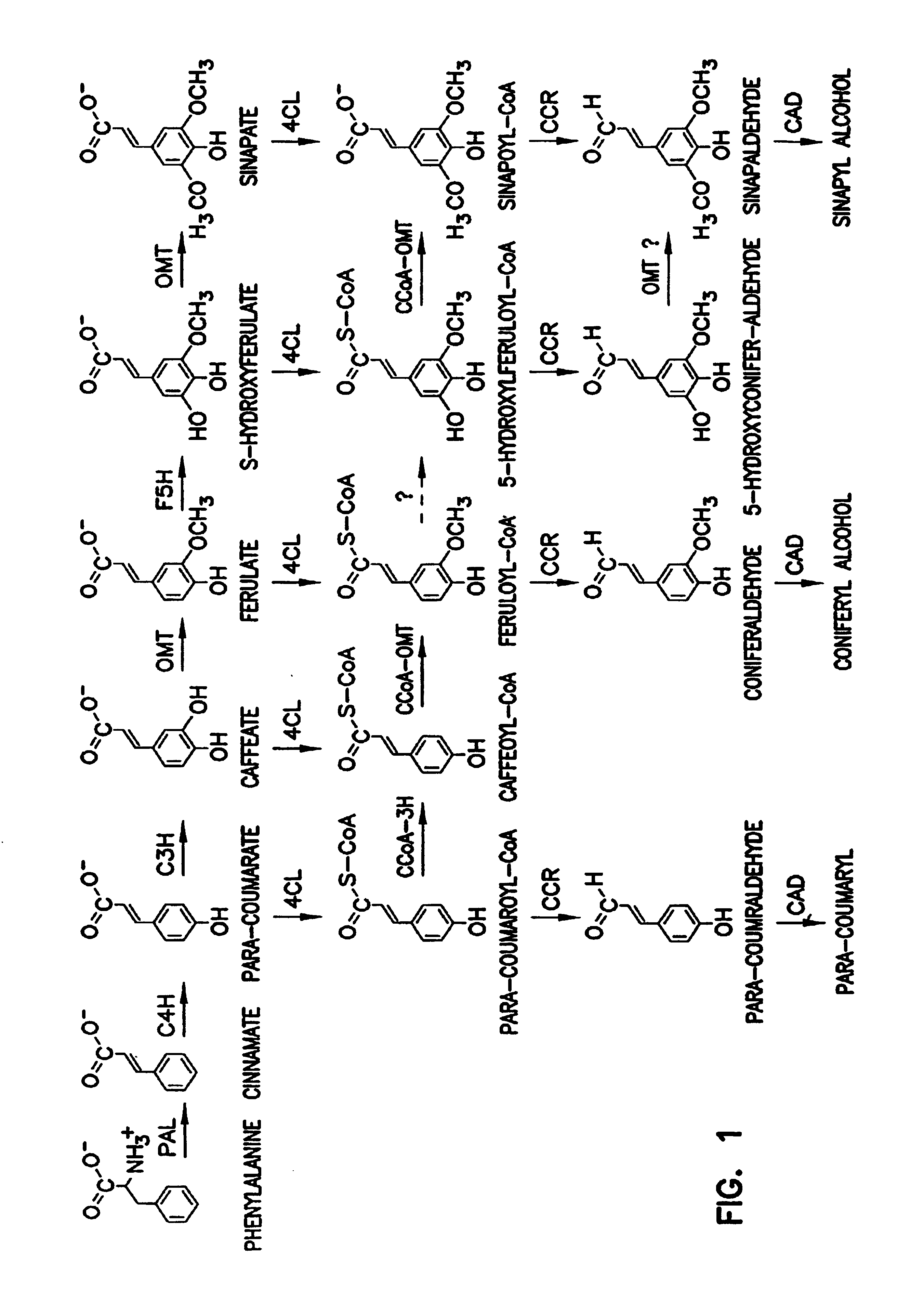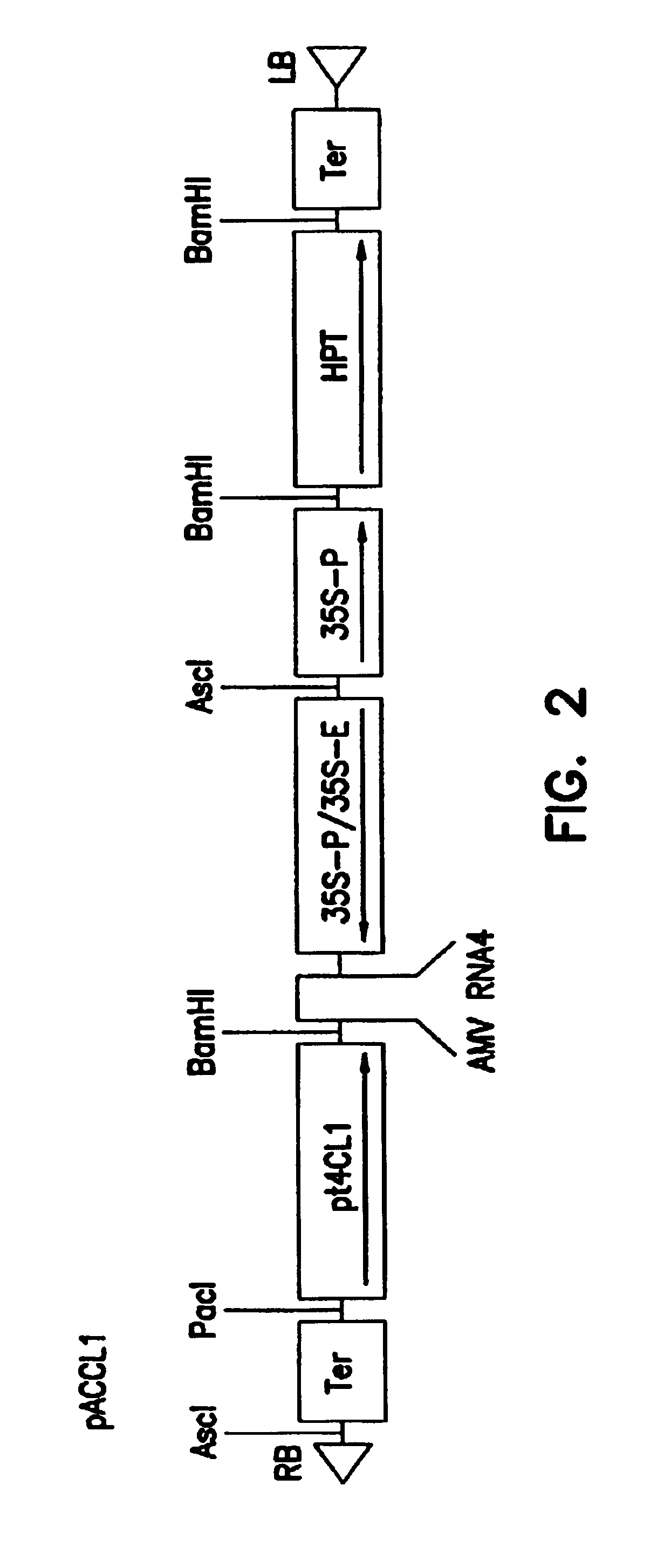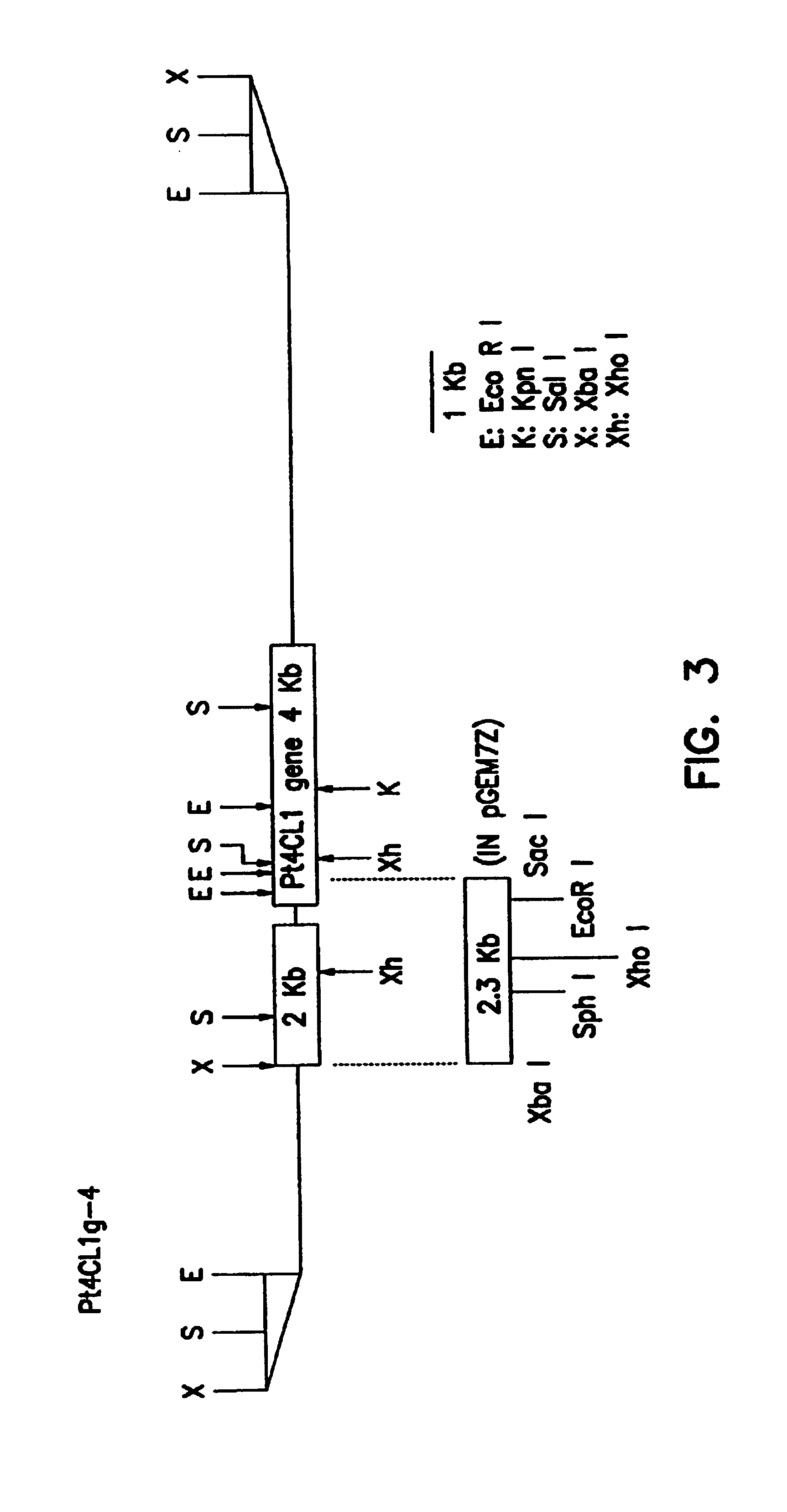Genetic engineering of plants through manipulation of lignin biosynthesis
- Summary
- Abstract
- Description
- Claims
- Application Information
AI Technical Summary
Benefits of technology
Problems solved by technology
Method used
Image
Examples
Embodiment Construction
[0049]The invention pertains to genetically down regulating a lignin pathway p-coumarate Co-enzyme A ligase (CCL). Trees which have been genetically transformed to down regulate CCL will hereafter be called transgenic trees. Such down regulation can result in faster growing trees. Such down regulation can result in a reduction in the lignin content of the trees and / or altered lignin structure. Such down regulation can result in increased cellulose content. Such down regulation can result in increased tree disease resistance. Further, by using a specific promoter of CCL, targeted tissue gene expression can be achieved in either the xylem or the epidermal tissues of the plant.
A. CCL
[0050]Lignin is synthesized by the oxidative coupling of three monolignols (coumaryl, coniferyl and sinapyl alcohols) formed via the phenylpropanoid pathway as shown in FIG. 1. Reactions in the phenylpropanoid pathway include the deamination of phenylalanine to cinnamic acid followed by hydroxylations, meth...
PUM
| Property | Measurement | Unit |
|---|---|---|
| Fraction | aaaaa | aaaaa |
| Fraction | aaaaa | aaaaa |
| Fraction | aaaaa | aaaaa |
Abstract
Description
Claims
Application Information
 Login to View More
Login to View More - R&D
- Intellectual Property
- Life Sciences
- Materials
- Tech Scout
- Unparalleled Data Quality
- Higher Quality Content
- 60% Fewer Hallucinations
Browse by: Latest US Patents, China's latest patents, Technical Efficacy Thesaurus, Application Domain, Technology Topic, Popular Technical Reports.
© 2025 PatSnap. All rights reserved.Legal|Privacy policy|Modern Slavery Act Transparency Statement|Sitemap|About US| Contact US: help@patsnap.com



